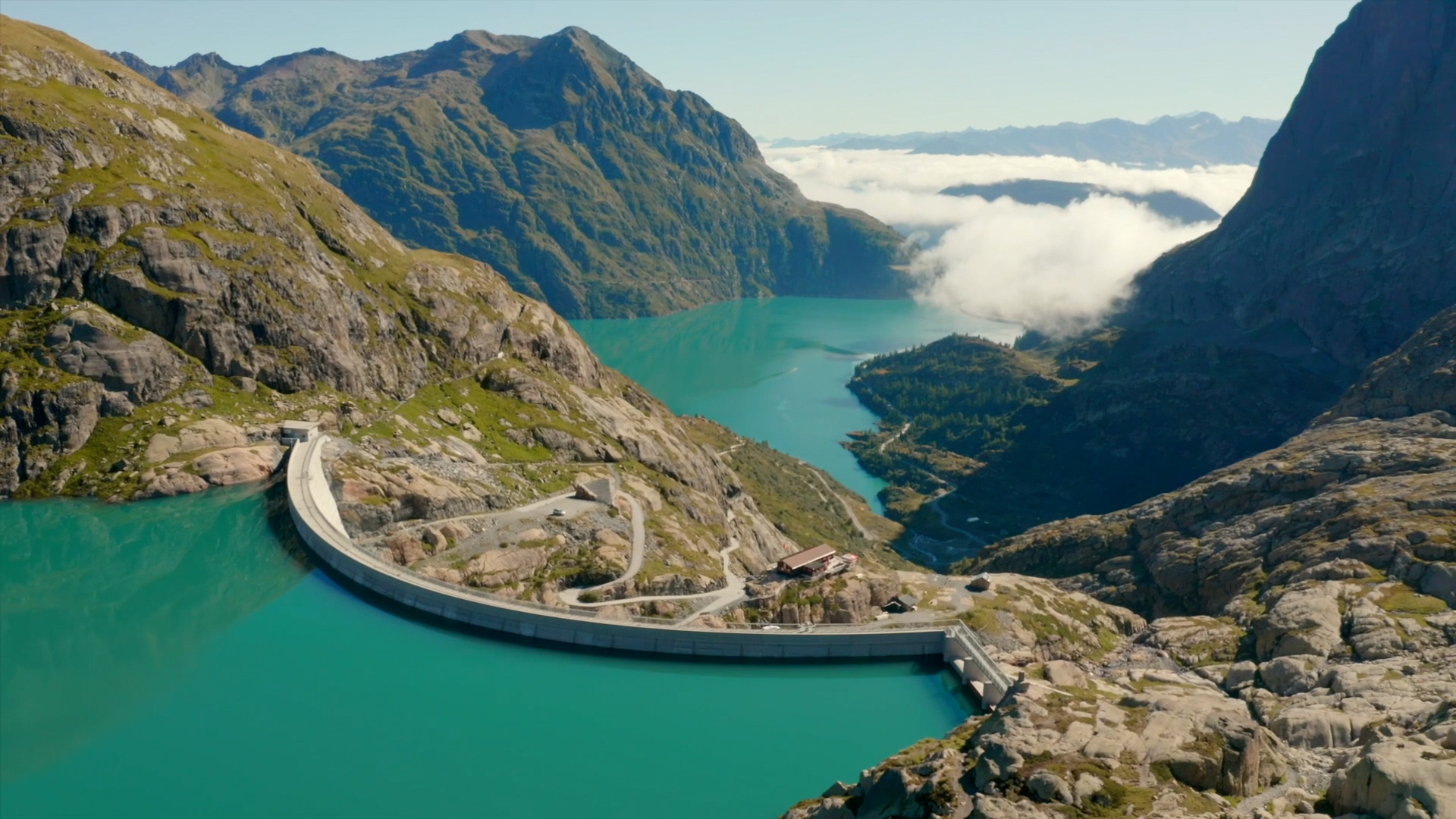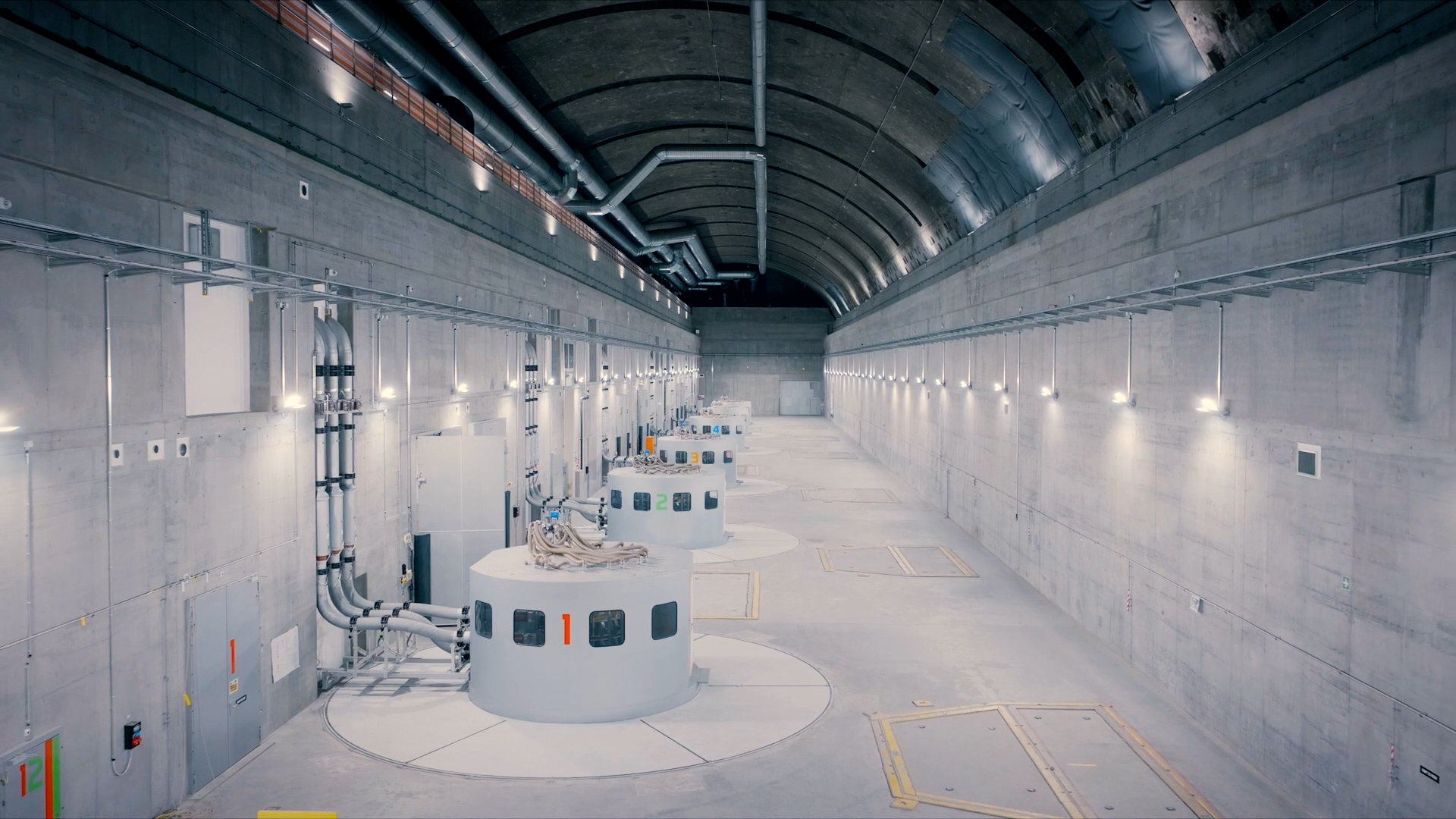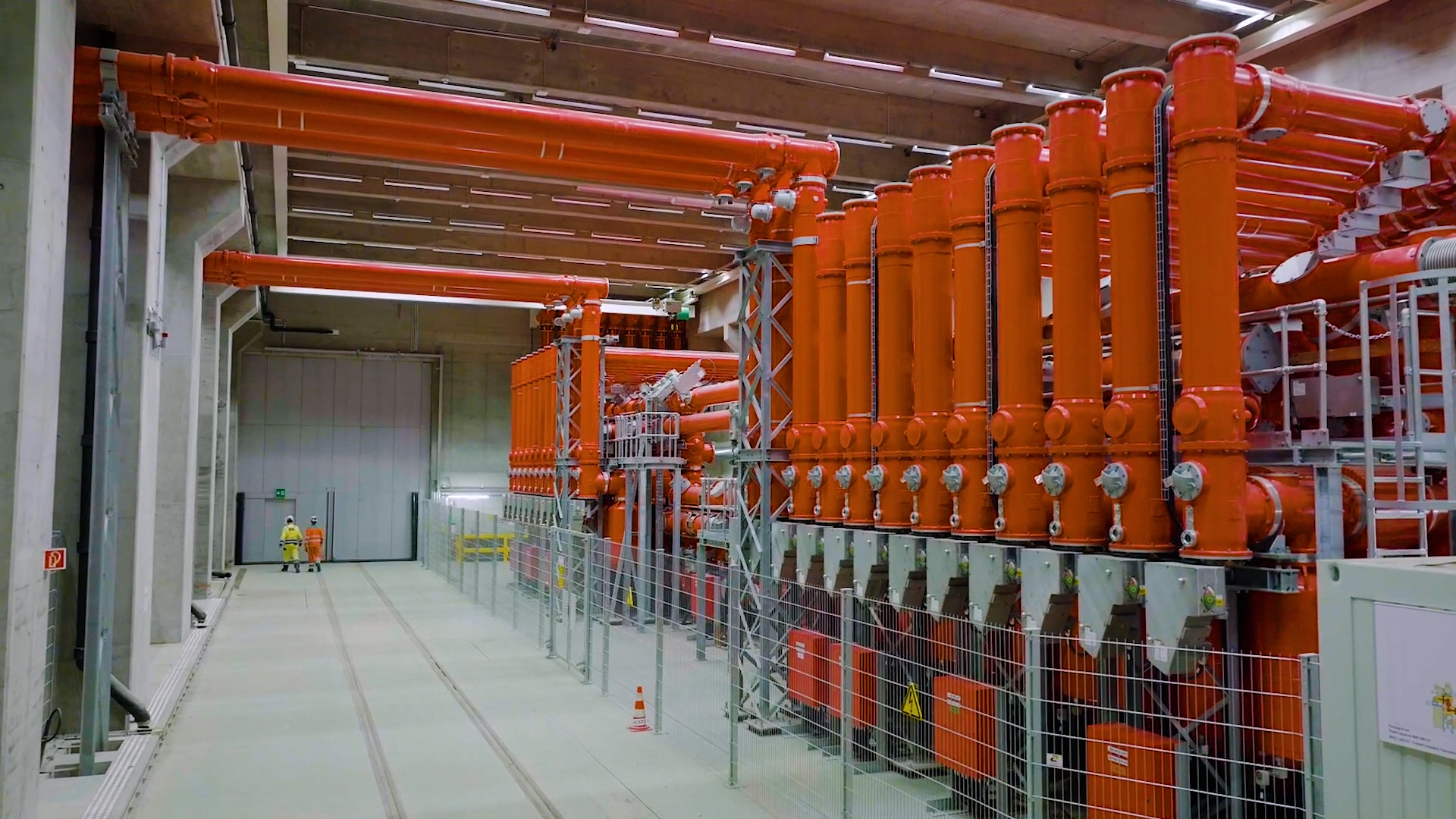23:17

More than a third of electricity around the globe is generated from low carbon sources. But how that energy is stored can be damaging to the environment.
Much of the world still uses giant batteries, which contain metals that can contaminate ecosystems. One ecologically-friendly solution might be hidden in an idyllic corner of the Swiss Alps, thousands of meters above sea level.
CGTN's Razor programme has visited a giant 'water battery' that's been built under two repurposed reservoirs, and promises to transform Europe's energy grid.
Developers of the 2.2 billion Swiss franc (approx. $2.30 billion) Nant de Drance plant in the canton of Valais, which came online last July, say it has capacity to store enough electricity to charge 400,000 car batteries simultaneously.
Its six turbines are tucked in a cavern 600 meters below ground between the Emosson and Vieux Emosson reservoirs and have a capacity of 900 MW, making it one of the most powerful pumped storage plants in the continent.
Nine-hundred megawatts is around 10 percent of Switzerland's average grid capacity.
During peak demand, Nant de Drance produces electricity from hydropower. But when output from sources such as wind and solar exceeds demand, the plant stores the surplus electricity by pumping water into the higher Vieux Emosson reservoir.
But when there's a higher demand for electricity than is being generated by other renewable energy sources, water from the upper lake passes back down through the turbines of the plant, generating electricity.
The same water can be pumped back and forth between the two lakes and turbines in between, depending on excess supply or extra demand.

The tops of turbines that are used to pump the water in the plant. /CGTN/
The tops of turbines that are used to pump the water in the plant. /CGTN/
Making a splash
It took 14 years to build the plant, which takes less than five minutes to switch from full pumping mode to full power generation. At 360 cubic meters per second, the volume of water passing through its turbines corresponds to the summertime flow of the Rhone river through Geneva.
Robert Gleitz, a delegate from the board of directors, told CGTN that at full power, it could power a turbine with the equivalent of one Olympic swimming pool every 10 seconds.
Typically the plant pumps water into storage in the afternoon, at night and on weekends, then generates power in the morning and evening when prices are higher, director Alan Sauthier told the Reuters news agency last August.
The plant is approximately 80 percent efficient, as part of the energy is transformed into heat that is then tackled by cooling systems.

Pipes in the Nant de Drance plant. /CGTN/
Pipes in the Nant de Drance plant. /CGTN/
Costly credentials?
But were the high cost and years of construction worth it? The company has been allowed to use the water in the reservoirs for the next 80 years.
"We don't know how the electricity market is going to move in the future," said Gleitz. "But we have 80 years in front of us, 80 years of a concession. And during this 80 years we are going to pump and turbine the water, create value, I would say for electricity or through the electricity business, and we hope that obviously, I mean, the 2.2 billion will be, I would say, paid back to the shareholders."
And there's another environmentally conscious angle to the project. Around 1.7 million cubic meters of rock were extracted during the plant's construction.
Much of it has been used to make slopes on the nearby mountains, where different plant species have been sown in soil that was laid on top.
The work has been monitored by an advisory group which includes the World Wildlife Fund and Pro Natura, a Swiss preservation organization.
"We have to try to minimize the impact that we have on nature. Because nature is essential for us," said Luc Gendre, the man responsible for the plant's environmental compensation measures.

Source(s): Reuters